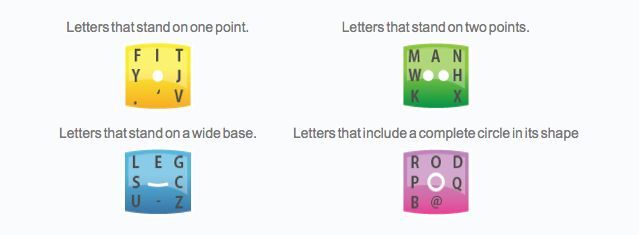
At next month's Consumer Electronics Show (CES 2012) in Las Vegas, tech start-up Snapkeys will be attempting to break the Guinness World Record for fastest typing speed. The company will be making its record attempt using volunteers (who it is currently in the process of recruiting), and its new 2i typing system for mobile devices. Unlike traditional systems that utilize a full QWERTY virtual keyboard that takes up much of the screen, 2i incorporates just four onscreen keys ... and they're all invisible.
The system divides up the letters of the alphabet between the four keys - or Snapkeys, specifically - based on their shape. These groupings consist of letters that stand on one point (such as F and I), letters that stand on two points (N, A, etc.), letters that stand on a wide base (L, E, etc.) and letters that include a complete circle in their shape (R, O, etc.). Basic punctuation marks and shapes are also included.

To use the 2i system, users simply thumb the spots on their device's touchscreen that correspond to the regions where the different letters are located within each Snapkey. Although the keys themselves aren't displayed onscreen, a translucent outline of each one does flash up when it's touched, to help guide users.
According to its designers, 2i not only frees up the screen from the clutter of a visual QWERTY keyboard, but it also allows for faster, more intuitive typing. To that end, they have put out an invitation for interested parties to download a trial version of the app from the company website - those people who demonstrate the fastest Snapkeys typing speeds will be invited on an all-expenses paid trip to CES, to make an attempt at the world record.
A commercial version of Snapkeys 2i should be available "soon," via the App Store and Android Market. It will work in a number of different languages, with US English as its default setting.
The system can be seen in use in the video below.
Source:Newatlas
Comments
Post a Comment